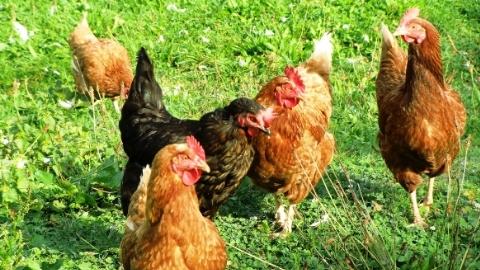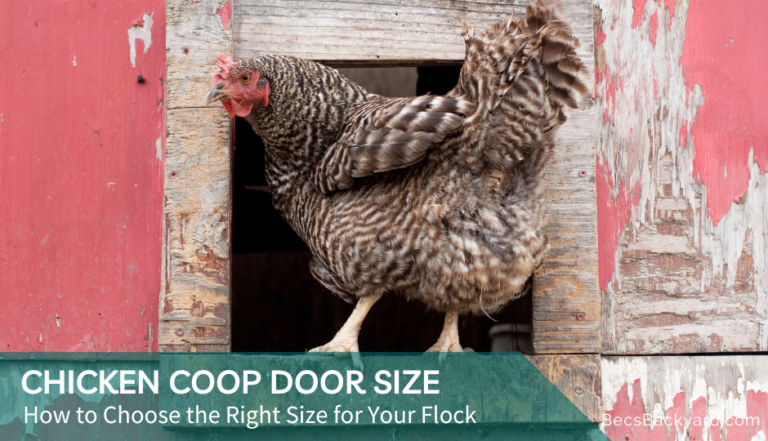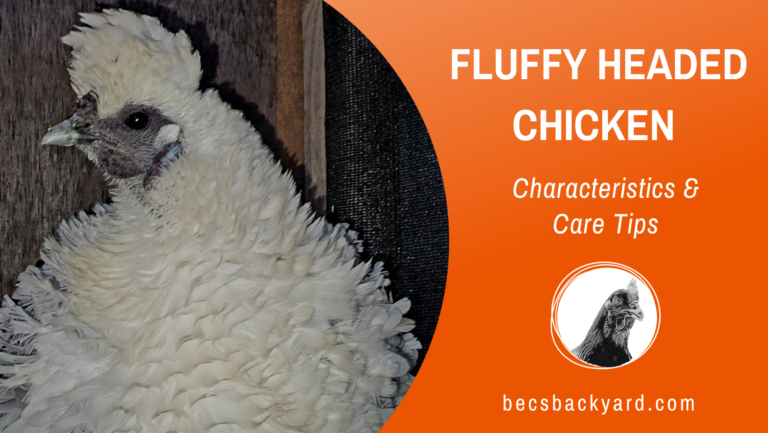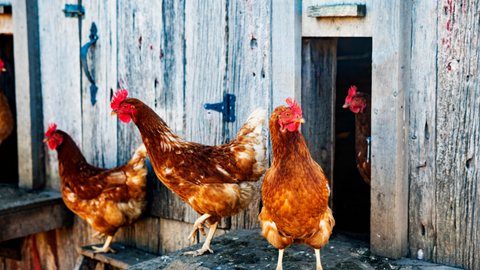How to Make a Chicken Dust Bath in 3 Simple Steps
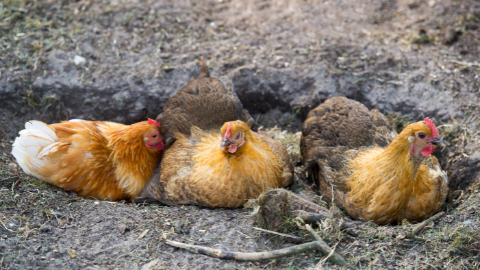
Discover the secret to happy and healthy chickens by providing them with a customized dust bath. In just three quick steps we will show you how to make a chicken dust bath. You can create a haven that promotes their well-being and keeps pests at bay. First, select the perfect location, ensuring it’s dry and easily accessible for your feathered friends. Next, gather the right materials—opt for fine dust, soil, or sand. With these straightforward steps, you’ll be on your way to offering your chickens a spa-like retreat that contributes to their overall health and happiness.
It’s as easy as 1, 2 3.
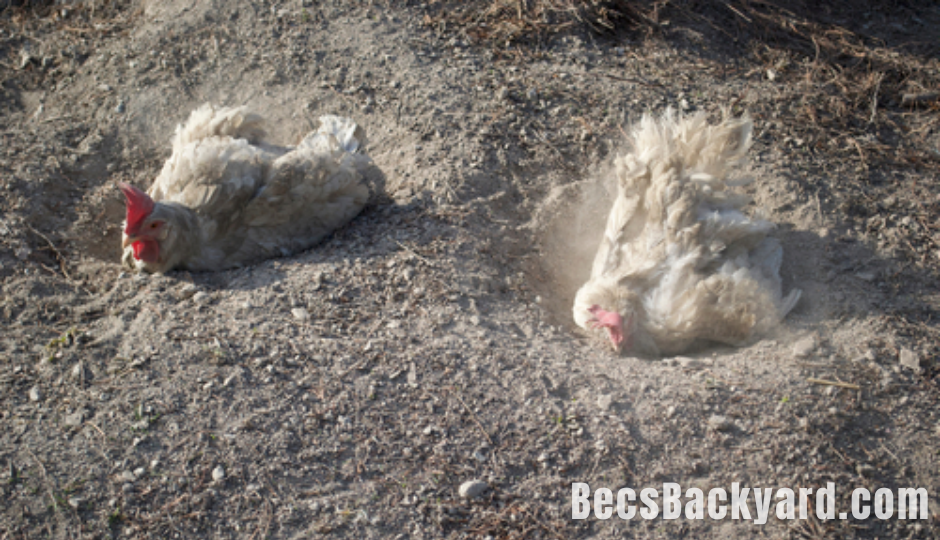
HOW TO MAKE A CHICKEN DUST BATH
STEP ONE – Container
Start by identifying an ideal location or container for your chickens’ dust bath. If you’re opting for a designated area in the coop or run, ensure it is dry, well-drained, and preferably in a sunny spot. Chickens love to bask in the sun while indulging in their dust baths.
Alternatively, consider using a shallow container, such as a wide plastic tub or a designated dust bath box, filled with the chosen dusting material. This container should be easily accessible to your flock and placed in a sheltered area to protect the dust from wind and rain. Whether it’s a specially designed box or a carefully selected corner of your coop, providing a suitable space sets the foundation for a blissful chicken dust bath experience.
Momma Fluff has made her dust bath in a dry area of the chicken run, it gets afternoon sun and is dry and cool. There was no need for a container because she had created this in the dirt in her chosen location.
The best types of containers I have used in the past are old tyres, large shallow plastic containers, child’s sandpit.
STEP TWO – Dusting Material
Now that you’ve found the perfect spot or container for your chickens’ dust bath, the next crucial step is selecting the ideal dusting material. Two excellent options are fine dry soil and sand. These materials provide the perfect texture for your chickens to indulge in their natural dust-bathing behavior, helping them maintain clean and healthy feathers while warding off pesky parasites.
While some may consider using diatomaceous earth, it’s important to note that its fine particles and abrasive nature can be irritants to both human and animal lung tissue. Opting for natural soil or sand ensures a safe and enjoyable dust bath experience for your feathered companions without any respiratory concerns.
At BecsBackyard the soil in our backyard is what we use for the dust-bath material. It is essential to keep it dry so it doesn’t turn into a mud pit.
STEP THREE – Location
Now that you’ve set the stage with the right container or designated area, let’s focus on the ideal location for your chickens’ dust bath. For those using a container, ensure it’s strategically placed in a quiet and sunny corner of the chicken run or coop. This not only provides a serene environment but also encourages your chickens to bask in the warmth of the sun as they dust themselves off.
If you’re creating a dust bath area within the chicken run, choose a spot that is well-drained and receives ample sunlight. Chickens love to indulge in their dust baths on dry ground, so avoiding areas prone to waterlogging is key. Consider creating a slightly raised mound for a natural feel. This allows for proper drainage while mimicking the loose, well-aerated soil they naturally seek out.
Whether in a container or a designated run area, the goal is to provide a peaceful retreat where your chickens can freely express their dust-bathing instincts. By selecting the right location, you’re ensuring that this routine becomes a cherished and essential part of your flock’s daily life. Get ready to watch them revel in the joy of their customized dust bath haven!
You may find that your flock finds their own dust bath area, like my flock in the above video.
Top 6 Reasons Why Chickens Take Dust Baths
1. Chicken dust baths help to control parasites.
Chickens can catch lice and mites, it’s a normal fact of life with poultry, but if you keep their coop clean and dry, and the birds have the ability to dust themselves, the likelihood of these parasites becoming a problem is low. If parasites do become a problem here are some other tips to treat your birds.
2. Chicken dust baths help to keep feathers clean and healthy.
The chicken fluffs up it’s feathers and dusts the dust into the feathers. The dust gets all up in there, in the feathers and onto the skin. There is absorbs excess moisture and oils.
3. Chicken dust baths can help to relieve stress and boredom.
Bathing becomes part of the flock’s routine. Having a space where they can pamper themselves helps with boredom or even if they are stressed out – performing normal chicken activities helps keep a sane chicken.
4. Chicken dust baths are a great way to socialize your flock.
Birds will dust bath alone, they will also hang out together and it appears that there are no bosses when they are concerning themselves with this activity, it might be the one time you will see everyone getting on together.
5. Chicken dust baths are fun!
If you have seen a chicken dust bathing themselves you will know how entertaining it is. It might be routine and a bit of pleasure for the birds, it’s an absolute hoot for the humans that watch.
6. Body temperature regulation
In summer time the chicken will seek out a space where it can dig a shallow ditch fluffing down into the cooler soil, this helps lower it’s body temperature.
Frequently Asked Questions
Why do chickens take dust baths?
Chickens take dust baths to maintain their overall health and hygiene. Dust bathing helps them control parasites such as mites and lice. It also aids in cleaning their feathers, removing excess oils, and promoting healthy skin.
What are Other Benefits of a Dust Bath?
In addition to the health benefits, dust baths also provide other benefits for your chickens. For example, rolling in the dust can be a form of stress relief for birds, particularly if they are housed in a crowded or stressful environment. The dust also helps to regulate the chicken’s body temperature by absorbing excess moisture and cooling them down. Finally, dust bathing can be a social activity for chickens, with multiple birds often using the same dust bath area at the same time.
How often should I provide a dust bath for my chickens?
Chickens should have access to a dust bath area regularly, ideally a few times a week. However, the frequency may vary based on environmental factors and the presence of parasites. If you notice an increase in scratching or feather fluffing, it may be a sign that your chickens need more frequent dust baths.
So, now we have given you a few tips on How To Make a Chicken Dust Bath, you will be able to create an area for your flock where they can dust themselves, and they will thank you for it! Remember to keep an eye on your flock and adjust their dust bath as required.
Happy Chicken Keeping!

